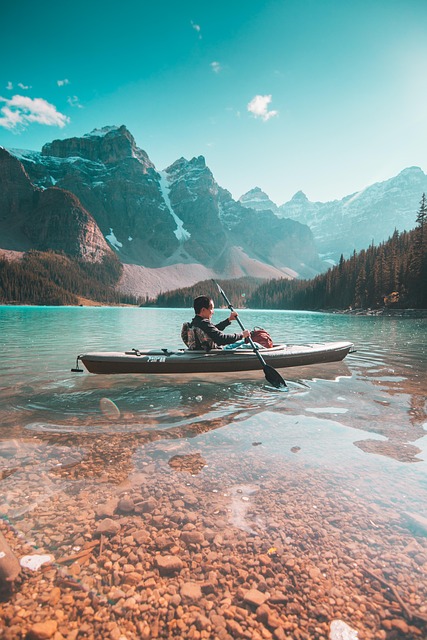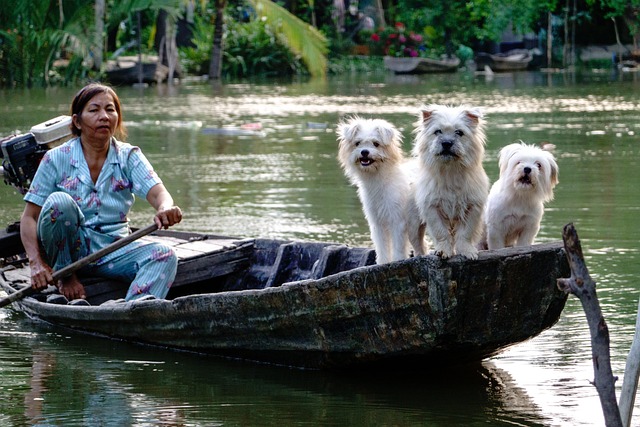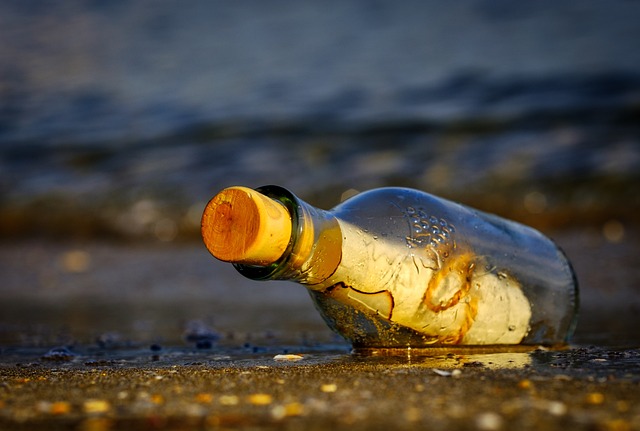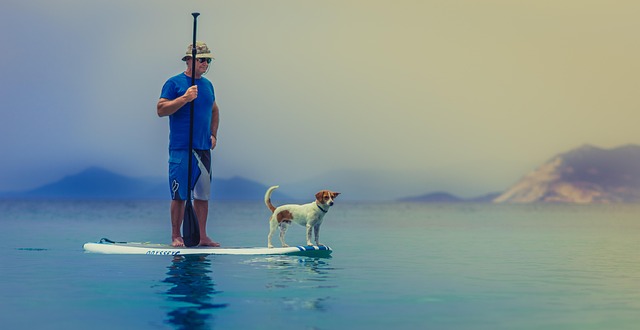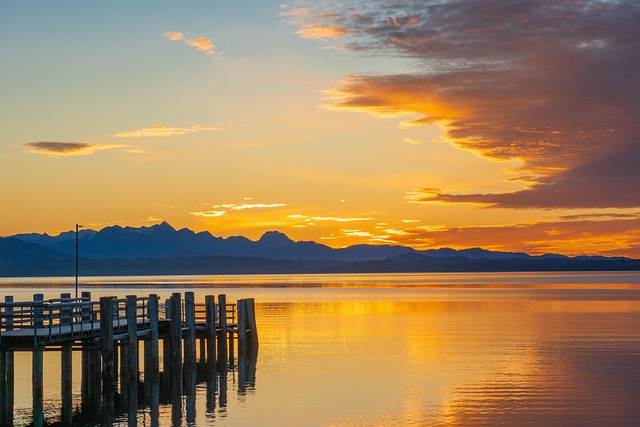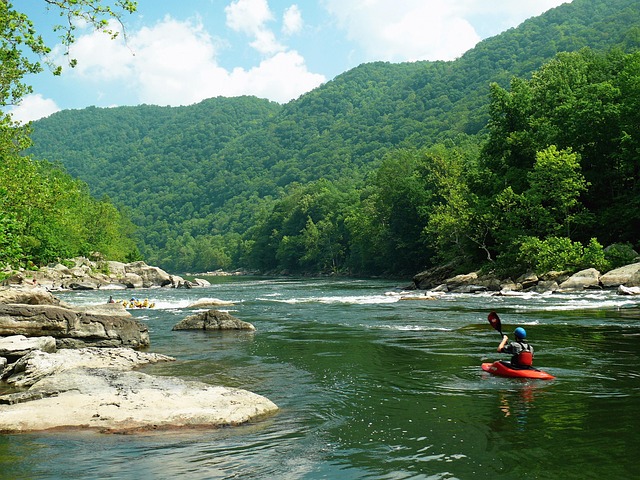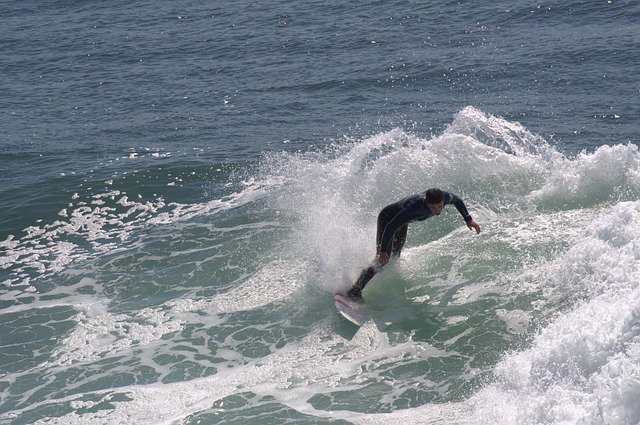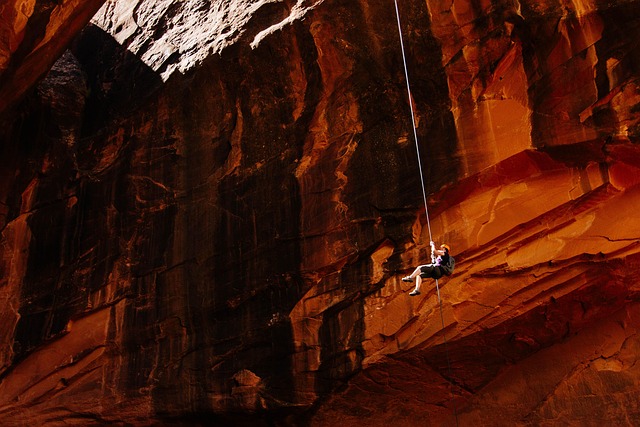
Category: Water Sports in Lane County Oregon
Water Sports in Lane County, Oregon: A Comprehensive Guide
Introduction
Nestled along the picturesque Pacific Northwest coast, Lane County, Oregon, is a haven for water sports enthusiasts. This region boasts an extensive coastline, vast freshwater lakes, and scenic rivers, offering a diverse range of recreational activities. From surfing and paddleboarding to whitewater rafting and fishing, Lane County’s natural wonders have made it a premier destination for water sports aficionados from around the globe. This article delves into the multifaceted world of water sports within this captivating county, exploring its historical roots, global impact, economic significance, technological innovations, regulatory framework, and future prospects. By the end, readers will gain an in-depth understanding of why Lane County has become a beacon for water sports enthusiasts worldwide.
Understanding Water Sports in Lane County, Oregon
Definition and Core Components
Water sports in Lane County encompass a broad spectrum of recreational activities conducted in or on aquatic environments. This includes surfing, paddle sports (kayaking and stand-up paddleboarding), whitewater rafting, fishing, diving, sailing, and boating. Each discipline attracts enthusiasts with varying skill levels, from beginners exploring the calm waters of lakes to experienced adventurers tackling the challenging rapids of rivers.
Historical Context
The history of water sports in Lane County dates back centuries, mirroring the region’s rich cultural heritage. Native American tribes like the Yamhill and Kalapuya utilized the waterways for transportation, trade, and sustenance. Traditional practices included fishing, hunting along riverbanks, and kayaking, which laid the foundation for modern-day water sports.
During the late 19th and early 20th centuries, European settlers arrived, introducing new technologies and sports. Fishing became a popular pastime, with local rivers and lakes teeming with salmon and steelhead trout. In the 1950s and 1960s, surfing gained traction along the Oregon coast, inspired by Hawaiian traditions. This era also saw the emergence of organized rafting trips on the Rogue River, attracting adventurers from across the country.
Over time, water sports in Lane County evolved with advancements in equipment and growing environmental awareness. The establishment of conservation groups and strict fishing regulations ensured the sustainability of aquatic resources, allowing for a thriving recreational scene.
Global Impact and Trends
International Influence
Lane County’s water sports culture has left its mark internationally, influencing destinations worldwide. The region’s renowned surfing spots have inspired similar developments along coastlines from California to Alaska. Additionally, the success of local whitewater rafting companies has prompted the replication of such operations globally, showcasing Oregon as a pioneer in commercial river trips.
Shaping Trends
Several key trends are shaping the future of water sports in Lane County:
-
Sustainability and Environmental Awareness: There is a growing emphasis on eco-friendly practices, with many businesses adopting sustainable operations to minimize their environmental impact. This includes using electric boats, implementing waste reduction strategies, and promoting responsible tourism.
-
Technological Integration: Advancements in water sports equipment, such as GPS-enabled kayaks and high-performance wetsuits, enhance safety and performance. Real-time data tracking and communication devices also improve trip planning and management for guided activities.
-
Diversification of Offerings: Beyond traditional sports, there is a trend towards experiential tourism, including overnight adventures, multi-day trips, and nature-based excursions. This caters to travelers seeking immersive experiences in the county’s natural beauty.
-
Inclusion and Accessibility: Efforts to make water sports more inclusive are gaining momentum. Adaptive sports programs enable individuals with disabilities to participate, while community outreach initiatives encourage diversity and accessibility at aquatic venues.
Regional Differences
The impact of these trends varies across different regions within Lane County:
-
Coastal Areas: Surfing and beach activities thrive along the expansive coast, attracting international surfers. The unique marine ecosystem supports a diverse range of water sports, from snorkeling to whale watching.
-
Rogue River Valley: Whitewater rafting on the Rogue River is a flagship activity, drawing tourists seeking thrilling adventures. The region’s scenic beauty and abundant wildlife make it a top destination for outdoor enthusiasts.
-
Lakes and Reservoirs: Freshwater lakes like Eugene’s Amazon Pond offer peaceful settings for kayaking, canoeing, and fishing. These quieter bodies of water cater to families and those seeking more relaxed water sports experiences.
Economic Considerations
Market Dynamics
Water sports in Lane County contribute significantly to the local economy through various market segments:
-
Tourism: Outdoor enthusiasts from around the world visit Lane County specifically for its water sports offerings. This drives demand for accommodations, restaurants, and adventure tours, stimulating the tourism industry.
-
Recreational Fishing: A thriving fishing community supports local guide services, charter boats, and outdoor retail stores. The economic impact extends to nearby towns, fostering a culture centered around aquatic activities.
-
Outdoor Gear and Equipment: Businesses selling water sports gear, apparel, and accessories thrive due to the passionate local community and increasing tourism. These retailers cater to both locals and visitors, contributing to retail sales and job creation.
Investment Patterns
The economic potential of water sports has attracted significant investments:
-
Tourism Infrastructure: Hotels, resorts, and vacation rentals have flourished in areas close to popular water sports destinations. These developments enhance the visitor experience while providing local businesses with opportunities for collaboration.
-
Outdoor Adventure Companies: Local startups and established ventures invest in guided tours, equipment rental services, and adventure experiences. These companies often partner with regional tourism boards to promote Lane County as a premier water sports destination.
-
Real Estate: Property values near aquatic attractions have increased, attracting investors looking to capitalize on the growing demand for waterfront properties and scenic views.
Technological Advancements
Impact on Water Sports
Technological innovations have revolutionized various water sports in Lane County:
-
Improved Safety Equipment: Advanced wetsuits, life jackets, and communication devices enhance safety during aquatic activities, especially in remote areas. GPS tracking allows for real-time monitoring of adventurers, ensuring prompt response in case of emergencies.
-
Performance Enhancements: High-tech surfboards with hydrodynamic designs and specialized paddling gear improve performance for competitive athletes. These advancements encourage participation in organized competitions, fostering a sense of community among water sports enthusiasts.
-
Data Analytics: Real-time data tracking provides valuable insights into river conditions, wave patterns, and fishing hotspots. This enables guided tour operators to offer personalized experiences and helps participants make informed decisions.
Future Potential
Emerging technologies present exciting opportunities for the future:
-
Drones and Remote Sensing: Drones can capture aerial footage of aquatic environments, aiding in conservation efforts and providing unique perspectives for promotional materials. Remote sensing technologies can monitor water quality and track wildlife habitats.
-
Virtual Reality (VR) and Augmented Reality (AR): VR simulations offer training opportunities for beginners, while AR applications could enhance on-water experiences by providing interactive information about aquatic life or historical sites.
-
Sustainable Energy Solutions: Integrating renewable energy sources into water sports operations can reduce environmental impact. Solar-powered charging stations and electric boats are potential game-changers in the industry.
Policy and Regulation
Key Policies and Regulatory Frameworks
The development of water sports in Lane County is guided by various policies and regulations to ensure sustainability and safety:
-
Fish and Wildlife Regulations: Strict fishing laws protect aquatic resources, including seasons, limits, and size restrictions. These measures aim to preserve fish populations and maintain ecological balance.
-
Water Quality Standards: Local governments enforce regulations to monitor and maintain water quality, addressing issues like pollution and sedimentation. Adherence to these standards is crucial for the health of aquatic ecosystems.
-
Land Use Planning: Zoning ordinances dictate land usage, ensuring that water sports facilities and access points are developed responsibly. These policies protect natural habitats while providing opportunities for recreational activities.
-
Business Licensing and Permits: Operating permits and licenses are required for tour operators, rental businesses, and commercial fishing ventures. This ensures compliance with safety standards and environmental regulations.
Influence on Development
The regulatory environment plays a critical role in shaping the industry:
-
Sustainability: Strict policies have fostered a culture of conservation among water sports businesses and participants. Many operations adopt eco-friendly practices to maintain the region’s natural beauty.
-
Safety Standards: Regulations ensure that adventurers have access to safe equipment and well-trained guides, reducing risks associated with water sports.
-
Community Engagement: Local governments often involve community members in policy-making processes, ensuring that regulations reflect the needs and concerns of residents and visitors alike.
Challenges and Criticisms
Overcoming Obstacles
Despite its success, water sports in Lane County faces several challenges:
-
Environmental Concerns: Rapid tourism development can strain local resources and impact aquatic ecosystems. Balancing economic growth with environmental conservation is an ongoing challenge.
-
Accessibility and Inclusion: Ensuring equal access to water sports for all, including individuals with disabilities and marginalized communities, remains a priority. Efforts to address accessibility gaps are necessary to foster inclusivity.
-
Competition for Resources: Growing popularity may lead to increased competition for water bodies and natural resources among various user groups, requiring careful management and planning.
Proposed Solutions
Strategies to overcome these challenges include:
-
Sustainable Tourism Planning: Implementing comprehensive plans that consider environmental, social, and economic factors ensures responsible tourism growth. This includes setting visitor limits, protecting sensitive habitats, and promoting low-impact activities.
-
Community Engagement and Education: Involving local communities in decision-making processes fosters a sense of ownership and encourages stewardship of aquatic resources. Educational programs can raise awareness about water sports etiquette and environmental responsibility.
-
Diversification of Offerings: Expanding the range of water sports activities caters to diverse interests, attracting a broader audience while reducing pressure on specific sites. This promotes accessibility and distributes user groups across various locations.
Case Studies
Success Stories
Rogue River Rafting: A Global Destination
The Rogue River in southwest Oregon is renowned worldwide for its exhilarating whitewater rafting experiences. Local outfitters, like Rogue Rafting Company, have played a pivotal role in shaping this industry. Through sustainable practices, top-quality guide training, and personalized trips, they’ve attracted adventurers from every corner of the globe. This success has led to increased tourism revenue, economic growth for nearby communities, and conservation efforts focused on preserving the river’s natural beauty.
Oregon Coast Surfing: A Global Influence
The Oregon coast is known for its consistent surf breaks, attracting international surfers seeking challenging waves. Local surfing communities, such as those in Newport and Cannon Beach, have contributed to global surfing culture through their passionate advocacy. They host annual events, promote sustainable beach practices, and foster a sense of community among surfers. This success has positioned Lane County as a significant player on the international surfing stage.
Future Prospects
Emerging Trends and Growth Areas
-
Eco-Tourism Expansion: The demand for eco-friendly experiences is expected to grow, with more businesses adopting sustainable practices. This includes carbon-neutral tours, waste-reducing initiatives, and partnerships with conservation organizations.
-
Digital Integration: Water sports technology will continue to evolve, offering advanced tracking devices, digital mapping tools, and interactive apps that enhance the user experience. Virtual reality training simulations could become commonplace, especially for beginners.
-
Water Sports for All: Efforts to make water sports more inclusive will gain momentum, with adaptations for different abilities and age groups. This includes accessible boat design, adaptive surfing programs, and community outreach initiatives.
Strategic Considerations
-
Sustainable Development: Prioritizing environmental stewardship will be crucial for long-term success. This involves protecting aquatic ecosystems, promoting responsible tourism, and adopting renewable energy solutions.
-
Community Collaboration: Building partnerships between local businesses, government agencies, and conservation groups is essential to address challenges and capitalize on opportunities. Collaborative efforts can ensure the sustainable growth of water sports while preserving Lane County’s natural wonders.
-
Research and Innovation: Investing in research to study aquatic ecosystems, river dynamics, and community impacts will inform policy decisions and guide future development. Technological advancements should be encouraged to enhance safety, accessibility, and sustainability.
Conclusion
Water sports in Lane County, Oregon, represent a harmonious blend of outdoor recreation, cultural heritage, and environmental stewardship. From its rich history to its global influence, this region has established itself as a premier destination for water enthusiasts worldwide. The economic impact is significant, driving tourism, supporting local businesses, and fostering community development. Technological advancements have enhanced safety, performance, and accessibility, while regulatory frameworks ensure sustainability.
While challenges exist, particularly in balancing environmental conservation with economic growth, Lane County’s approach to water sports offers valuable lessons for other regions. By embracing sustainable practices, community engagement, and innovation, this county has set a standard for responsible water sports development. Looking ahead, the future prospects are promising, with potential for further global influence, technological breakthroughs, and inclusive practices, solidifying Lane County’s place as a leader in the world of water sports.
FAQ Section
Q: What makes water sports in Lane County unique?
A: Lane County’s water sports scene is defined by its diverse offerings, from world-class whitewater rafting on the Rogue River to vibrant surfing communities along the coast. The region’s natural beauty, combined with a rich cultural heritage, creates a unique and captivating experience for visitors.
Q: Are there any safety concerns for water sports enthusiasts in Lane County?
A: Safety is a top priority in Lane County’s water sports industry. Strict regulations, well-trained guides, and improved safety equipment minimize risks. However, as with any outdoor activity, adventurers should always be prepared, follow local guidelines, and respect the power of nature.
Q: How does tourism impact the local environment?
A: Tourism development in Lane County is guided by sustainability principles to minimize environmental impact. This includes responsible land use planning, conservation efforts, and eco-friendly practices among businesses and visitors. Responsible tourism ensures that natural resources are preserved for future generations.
Q: Can water sports be enjoyed year-round?
A: Indeed! Lane County offers a variety of water sports experiences throughout the year. While some activities like surfing and paddleboarding peak during the summer, winter provides opportunities for ice fishing, snowmobiling on frozen lakes, and cozying up by fireplace with hot cocoa after a day on the slopes.
Q: Are there any accessibility features for individuals with disabilities?
A: Absolutely. Many water sports businesses in Lane County are committed to inclusivity and offer accessible options. This includes specialized equipment, guide services tailored for specific needs, and events designed to welcome participants of all abilities.


